Smith-Magenis Syndrome
Smith-Magenis Syndrome (SMS) is a rare neurobehavioral disorder characterized by a recognizable pattern of physical, behavioral, and developmental features. It is caused by particular genetic changes on chromosomal region 17p11.2, which contains the gene RAI1.
Incidence
SMS is a rare disorder that occurs in between 1 out of every 15,000 to 25,000 births. Although the number of individuals diagnosed with SMS has increased in recent years due to better diagnostic tools, the syndrome likely remains under diagnosed.
Your participation in PRISMS SMS Patient Registry will help us achieve a more accurate understanding of the incidence rate.
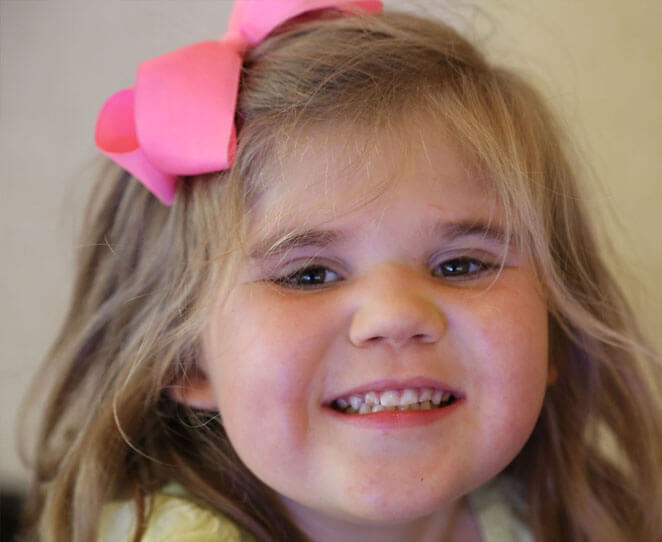
Common features include:
- Developmental delay/intellectual disability
- Hypotonia (low muscle tone)
- Poor gross motor and fine motor skills
- Feeding problems in infancy (poor suck/swallow); failure to thrive or difficulty gaining weight (<3 years)
- Speech delay
- Characteristic facial appearance (broad forehead, down-turned “tent”-shaped upper lip vermilion, short upturned nose)
- Short fingers and toes
- Distinct, broad-based gait (style of walking)
- Scoliosis (abnormal curvature of the spine)
- Vision problems (strabismus; nearsightedness)
- Middle ear abnormalities, chronic ear infections
- Hearing impairment
- Hoarse, deep, sometimes nasal voice
- Decreased sensitivity to pain; hypersensitivity
- Constipation
- Sleep disturbance (frequent nighttime awakenings; daytime sleepiness)
- Self-injurious behaviors
- Prolonged tantrums, explosive outbursts, impulsivity
- Arm hugging/hand squeezing
- Endearing and engaging personalities
- Excellent long-term memory for names, places, events
- Great sense of humor
- Eagerness to please and sensitivity towards others
Diagnosis
The diagnosis of Smith-Magenis Syndrome (SMS) is usually confirmed through a clinical blood test called a chromosome analysis. Diagnosis can also be made through a cytogenetic test and FISH (fluorescence in situ hybridization) or by chromosome microarray analysis (CGH).
Most people diagnosed with SMS are born with a small deletion of one member of their 17th pair of chromosomes. It is the lack of this specific section, known as 17p11.2, which causes the features of SMS.
The genes commonly deleted in persons with SMS have been narrowed to a “critical region” encompassing approximately 25 genes. All deletion cases include deletion of the RAI1 gene.
In cases where a deletion is not detected, sequencing of the RAI1 gene should be considered. Approximately 90% of the cases of SMS are due to deletion, with the remaining 10% due to a mutation that occurs within the RAI1 gene.
Mutations in RAI1 can be identified by sequencing of the RAI1 gene. Sequencing of RAI1 can be done by different types of genetic tests. Tests that include RAI1 sequencing:
- Whole Exome Sequencing: this test sequences all of an individual’s genes
- Panel Genetic Testing: this test includes sequencing for only a select number of genes. RAI1 must be listed as a gene in the panel. Panels for seizures, autism spectrum disorder and/or intellectual disability typically include RAI1
- RAI1 sequencing: this test sequences only RAI1
Although SMS is caused by a deletion of genetic material, it usually does not run in families. In most cases, the deletion occurs accidentally in a child around the time he or she is conceived, without being inherited from either parent. For this reason, we can say that SMS is clearly genetic, but not usually familial.
Families are advised to consult a genetic counselor or specialist for further advice regarding their own particular family situation. If you need help finding a genetic counselor in your area, please see the National Society of Genetic Counselors’ online directory.
In-Depth Review
PRISMS Professional Advisory Board has written an in-depth review of Smith-Magenis Syndrome (SMS). This review is published at GeneReviews, a medical genetics resource for physicians, health care providers and researchers. GeneReviews is funded by the National Institutes of Health and developed at the University of Washington, Seattle.



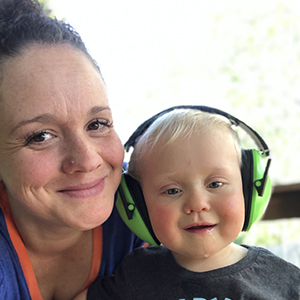 Maria Feagin
Maria Feagin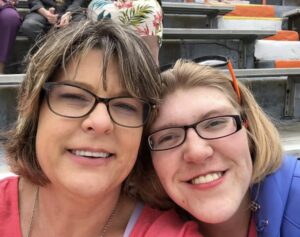 Amy Myers
Amy Myers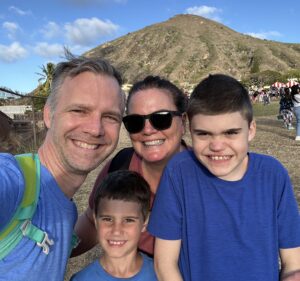
 Noémie Grebler
Noémie Grebler Allison Stephanouk
Allison Stephanouk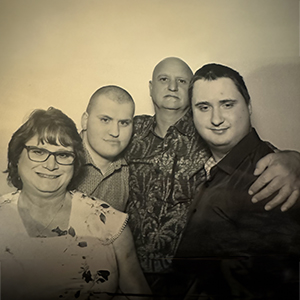 Ilse Ciprich
Ilse Ciprich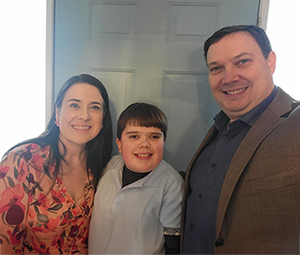 Sasha Piastro-Tedford
Sasha Piastro-Tedford Randi Tanenbaum
Randi Tanenbaum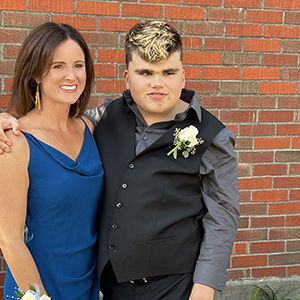 Jean Bishop
Jean Bishop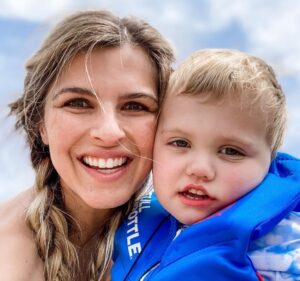 Natasha Schaller
Natasha Schaller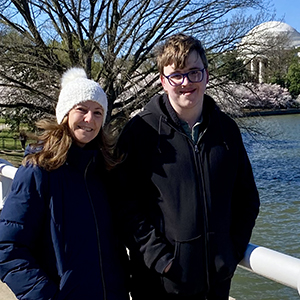 Barbara Watson
Barbara Watson Amanda Collins
Amanda Collins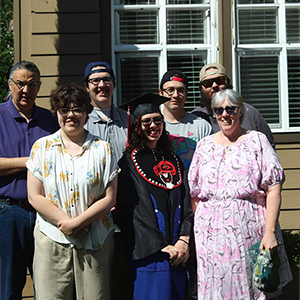 Lori Martin
Lori Martin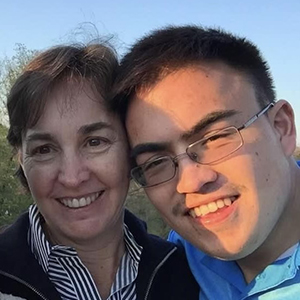 Laura Russell
Laura Russell Erin Morrison
Erin Morrison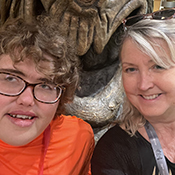 Linda Johnson
Linda Johnson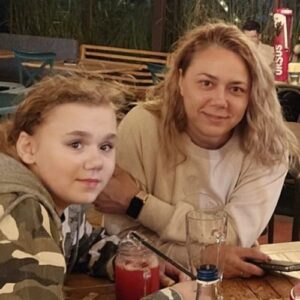 Roxana Dragan
Roxana Dragan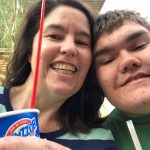 Patty Loyer
Patty Loyer Eric Rogers
Eric Rogers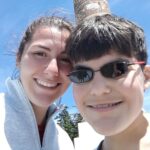 Ana Witherspoon
Ana Witherspoon Michelle Larscheid
Michelle Larscheid Sinan Omer Turnacioglu, MD
Sinan Omer Turnacioglu, MD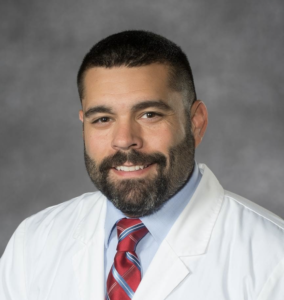 Christopher Vlangos PhD, FACMG
Christopher Vlangos PhD, FACMG Cora Taylor, PhD
Cora Taylor, PhD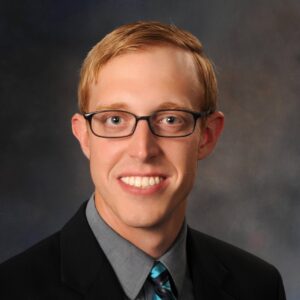 John Berens, MD, FAAP, FACP
John Berens, MD, FAAP, FACP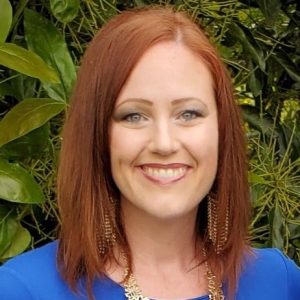 Amy Pereira
Amy Pereira Rachel Franciskovich, MS, CGC
Rachel Franciskovich, MS, CGC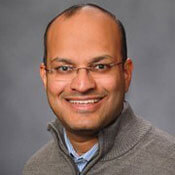 Santhosh Girirajan, MBBS, PhD
Santhosh Girirajan, MBBS, PhD Rebecca Foster, PhD
Rebecca Foster, PhD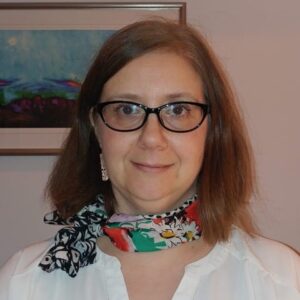 Nancy Raitano, PhD
Nancy Raitano, PhD Christine Brennan, PhD CCC-SLP
Christine Brennan, PhD CCC-SLP Andrea Gropman, MD
Andrea Gropman, MD Kerry Boyd, MD, FRCPC
Kerry Boyd, MD, FRCPC Barbara Haas-Givler, MEd, BCBA
Barbara Haas-Givler, MEd, BCBA Ann C.M. Smith, MA, DSc (Hon), CGC
Ann C.M. Smith, MA, DSc (Hon), CGC Sarah Elsea, PhD
Sarah Elsea, PhD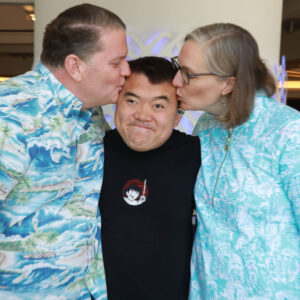 Glen & Kristine Braden
Glen & Kristine Braden John Roseborough
John Roseborough Barclay Daranyi
Barclay Daranyi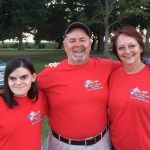 Ashton Charmaine
Ashton Charmaine Carissa Le
Carissa Le Rhonda Lowney
Rhonda Lowney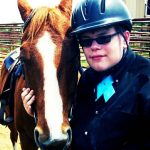 Ron Dixon
Ron Dixon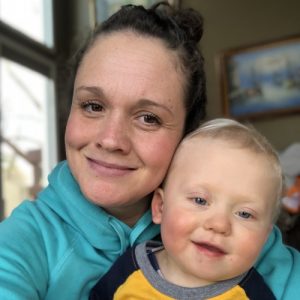 Maria Feagin
Maria Feagin Caitlin Seldon
Caitlin Seldon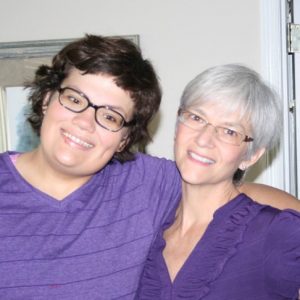 Julia Hetherington
Julia Hetherington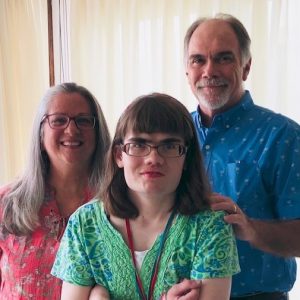 Liz and Bill Yates
Liz and Bill Yates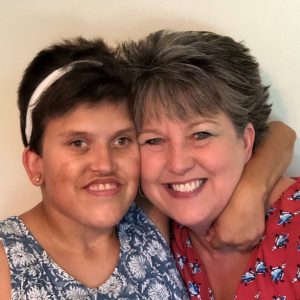 Tracie Belcher
Tracie Belcher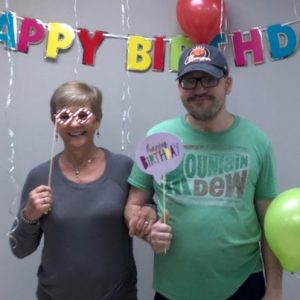 Rhonda Franklin
Rhonda Franklin Marni Rolston
Marni Rolston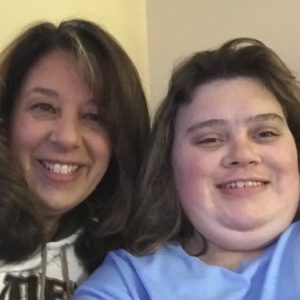 Michele Zdanowski
Michele Zdanowski Theresa & Mark Smyth
Theresa & Mark Smyth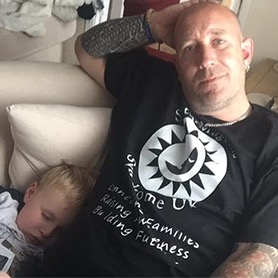 Mick Pearson
Mick Pearson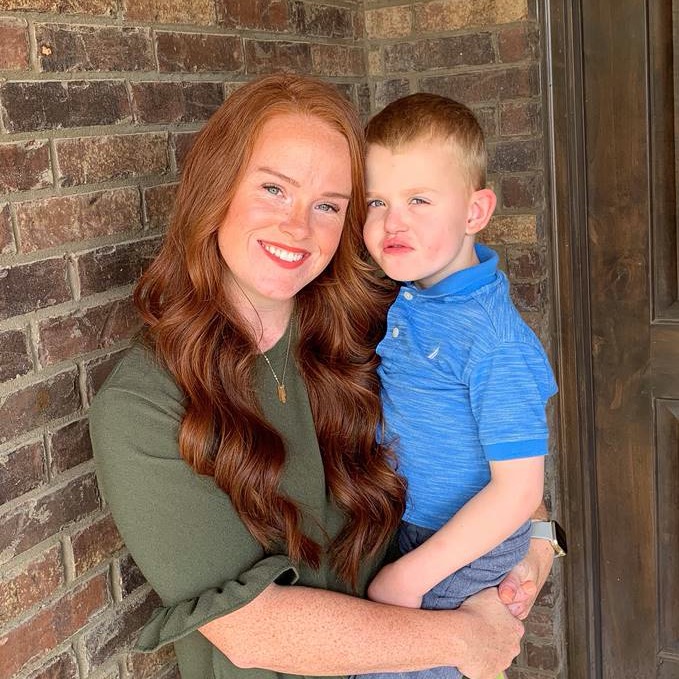 Abby Bell
Abby Bell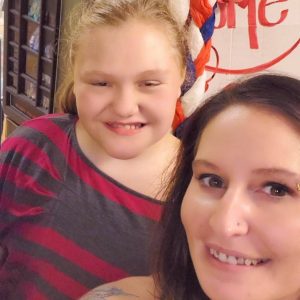 Heather Boney
Heather Boney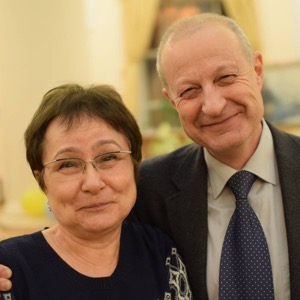 Bela Kafengauz & Alexander Tzetlin
Bela Kafengauz & Alexander Tzetlin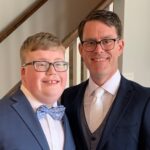 Kevin Daly
Kevin Daly Phil Ruedi
Phil Ruedi Brandon Daniel
Brandon Daniel Denien Rasmussen
Denien Rasmussen Jackie Fallenstein
Jackie Fallenstein Percy Huston
Percy Huston Lynda Kilian
Lynda Kilian Diane Erth
Diane Erth Theresa Wilson, MS, RD
Theresa Wilson, MS, RD Margaret Miller
Margaret Miller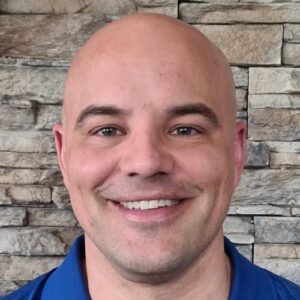 Jason Michaud
Jason Michaud Michelle Lee
Michelle Lee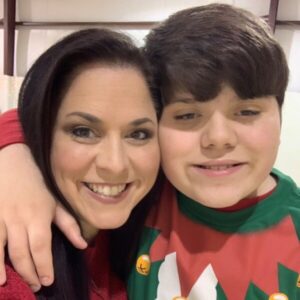 Jill Wood
Jill Wood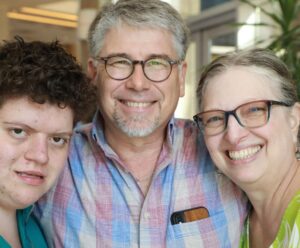 Kim Wirth
Kim Wirth Jane Charles, MD
Jane Charles, MD Brandi Wilson
Brandi Wilson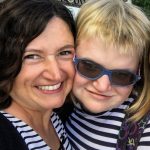 Debbie Brooks
Debbie Brooks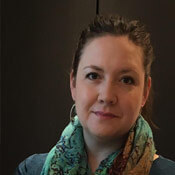 Amanda Downey
Amanda Downey Laurie Bellet
Laurie Bellet Remi Robbins,
Remi Robbins,
 Many SMS patients experience frequent infections but the immunological basis for this phenomenon is currently unclear
Many SMS patients experience frequent infections but the immunological basis for this phenomenon is currently unclear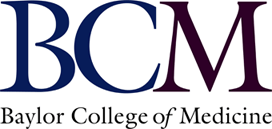
 Smith-Magenis Syndrome is a genetic disorder most commonly caused by a deletion of chromosome 17p11.2, and less commonly by mutations in the RAI1 gene
Smith-Magenis Syndrome is a genetic disorder most commonly caused by a deletion of chromosome 17p11.2, and less commonly by mutations in the RAI1 gene
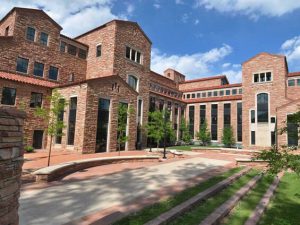 The SMS IEP Research Study team conducts research in the Department of Speech, Language, and Hearing Sciences at the University of Colorado Boulder
The SMS IEP Research Study team conducts research in the Department of Speech, Language, and Hearing Sciences at the University of Colorado Boulder
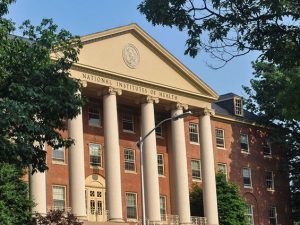 Growth Patterns in SMS
Growth Patterns in SMS


 Do you have a child with Smith-Magenis syndrome?
Do you have a child with Smith-Magenis syndrome? Leah Baigell
Leah Baigell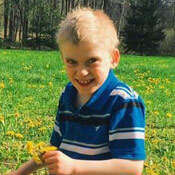 Judy Bogdan
Judy Bogdan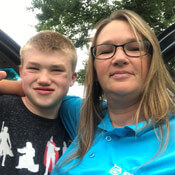 Mary Hards
Mary Hards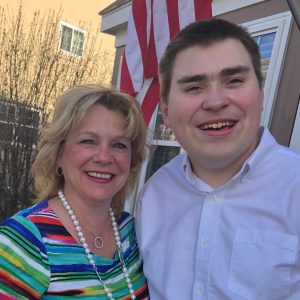 Denien Rasmussen
Denien Rasmussen Heidi Graf
Heidi Graf Annetta Zidzik
Annetta Zidzik Jennifer Klump
Jennifer Klump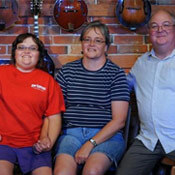 Eric and Kim Hoffman
Eric and Kim Hoffman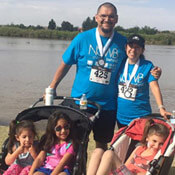 Alejandro and Delma Aguilar
Alejandro and Delma Aguilar Mary Beall
Mary Beall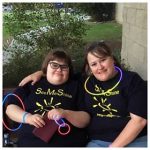 Jennifer Comford
Jennifer Comford Charlene Liao
Charlene Liao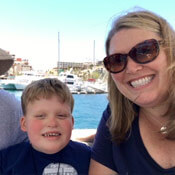 Diane Erth
Diane Erth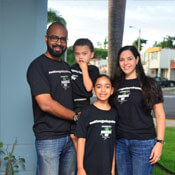 Sheila Herndandez-Vale
Sheila Herndandez-Vale Maria Elena Carrancedo
Maria Elena Carrancedo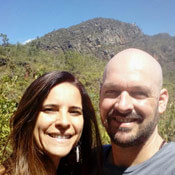 Eliane Barros
Eliane Barros Sabrina Bisiani
Sabrina Bisiani
 A new clinical study is investigating circadian rhythms and sleep disturbances in people with Smith-Magenis Syndrome to guide the development of a possible treatment.
A new clinical study is investigating circadian rhythms and sleep disturbances in people with Smith-Magenis Syndrome to guide the development of a possible treatment.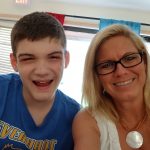 Allison Leatzow
Allison Leatzow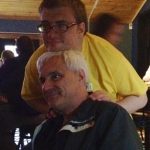 Kevin O’Connor
Kevin O’Connor Bernadette Huston
Bernadette Huston Brooke Widmer
Brooke Widmer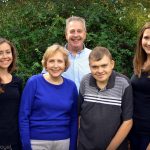 Maureen Monroe
Maureen Monroe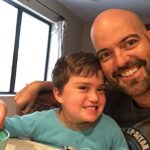 Trevor Gritman
Trevor Gritman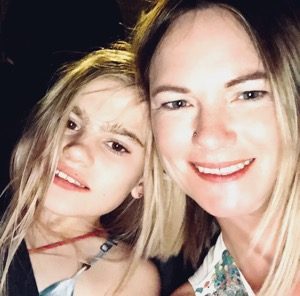 Cally Bauman
Cally Bauman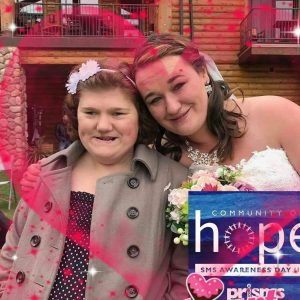 Brianna Ryczek
Brianna Ryczek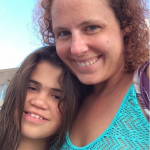 Carissa Le
Carissa Le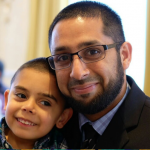 Osman Umarji
Osman Umarji Callihan Marshall
Callihan Marshall